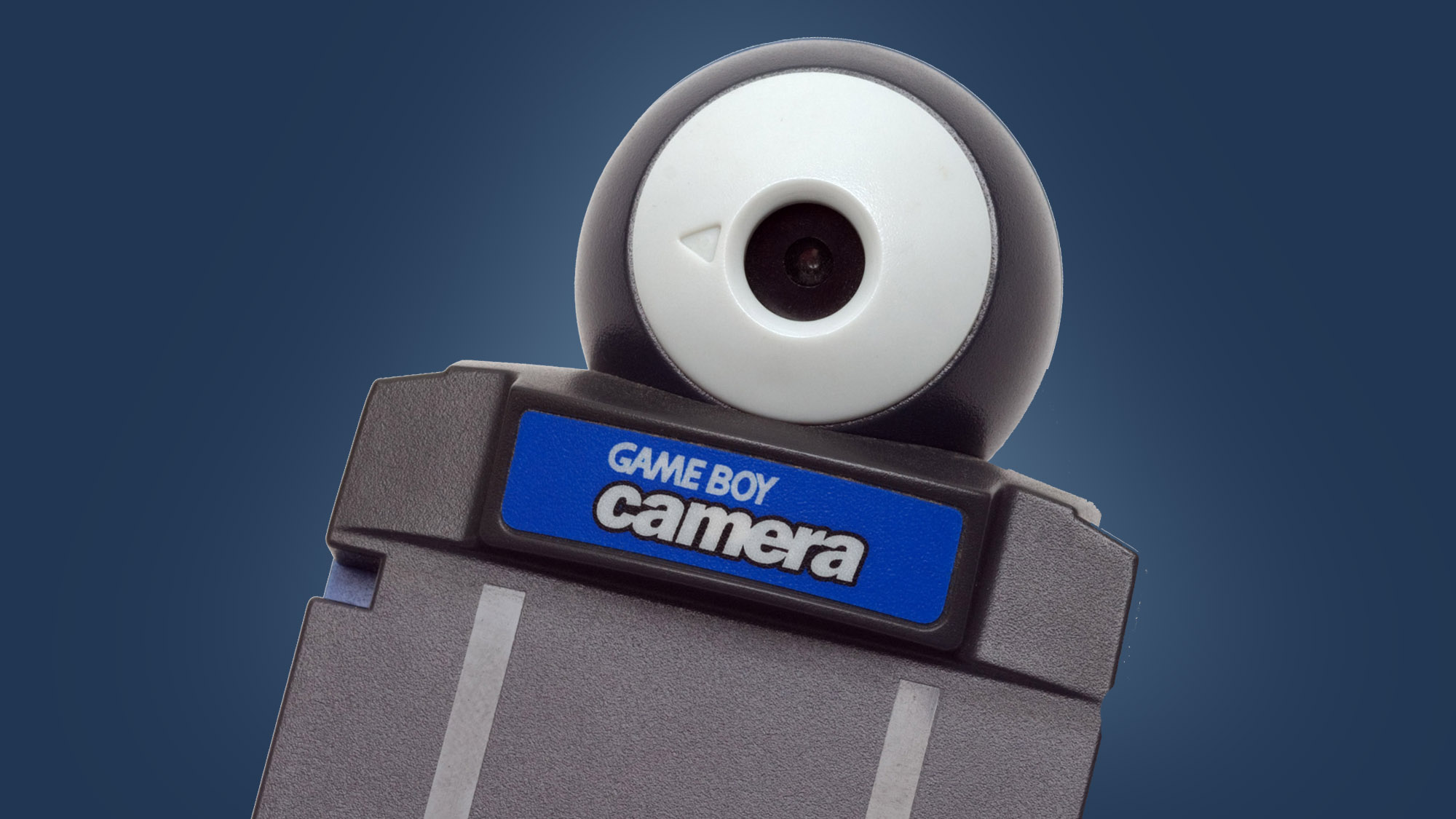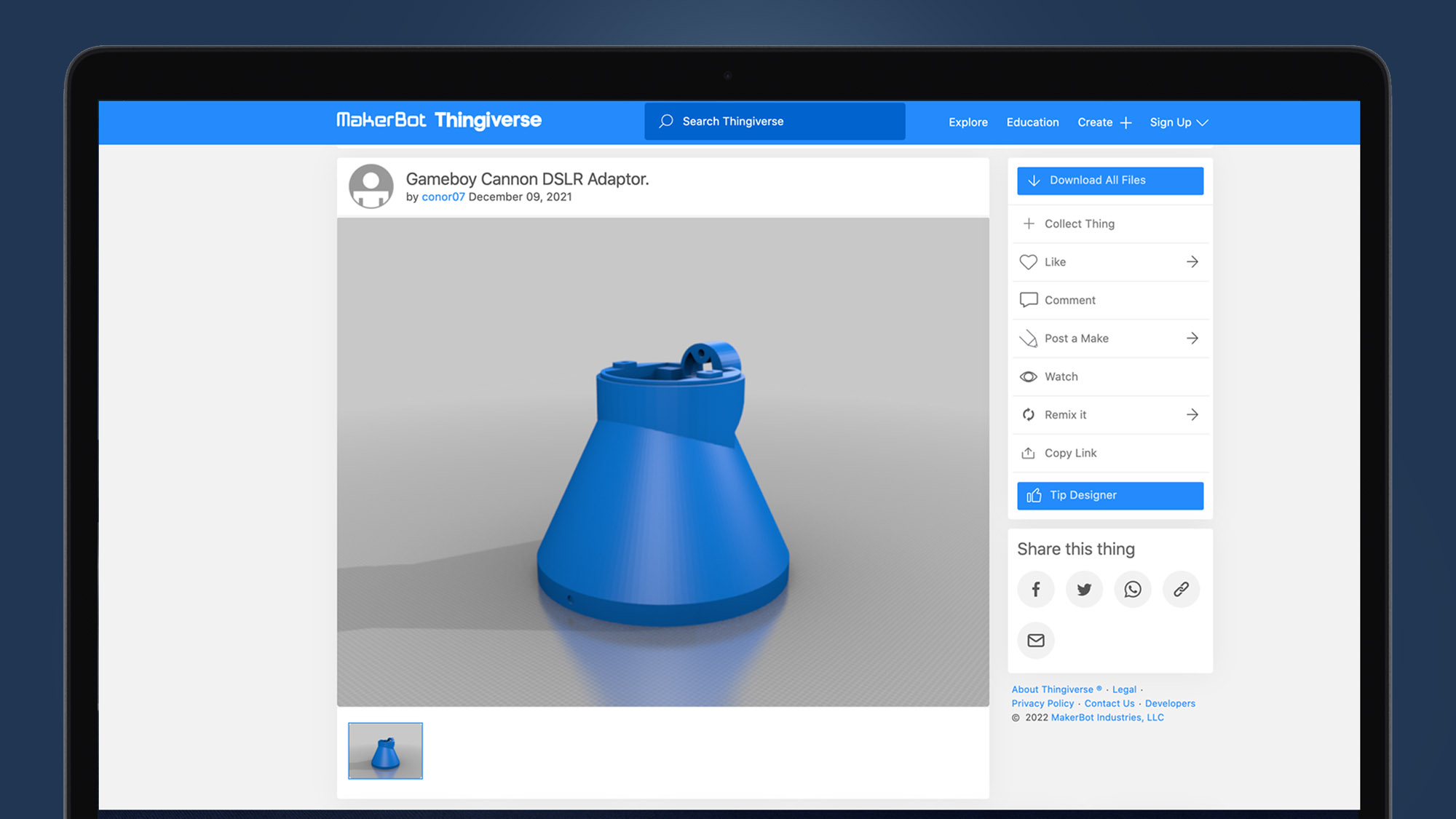Hacker somehow mods Game Boy Camera to work with Canon DSLR lenses
All hail the Zoom Boy

It may be almost 24 years old, but that doesn't mean the Game Boy Camera can't evolve – thanks to some hacking from a persistent YouTuber, the Game Boy accessory has been shown to work with Canon DSLR lenses (albeit with a few understandable trade-offs).
The creation made by YouTuber Conorsev might not replace your Google Pixel 6 Pro – the Game Boy Camera is, after all, a grayscale-only affair with a 0.1MP resolution. But if you're looking for a more challenging photography project than the usual bokeh ball experiments, it could be a fun one to tackle.
The project has to overcome two big challenges. Firstly, there was the hurdle of importing the Game Boy Camera's photos from the handheld console itself. The camera, which plugs into the Game Boy's cartridge slot, is designed to only send its image data to the Game Boy Printer (smart thinking, Nintendo).
But this was overcome by soldering a cheap Arduino board to the Printer's cable to intercept the data, then using a Game Boy Emulator to build a digital version of the image.
The more challenging part of the hack was replacing the Game Boy Camera's wide-angle lens with DSLR glass. Isolating the camera sensor was simply a case of dismantling the camera with a specialist screwdriver, but creating a mount for the DSLR lens involved 3D printing an adapter downloaded from Thingiverse.
As Conorsev discovered, it's best to print this in black to avoid light seeping through the adapter and over-exposing your photos. The original Canon DSLR lens adapter design, which is in the video's description, also had too long a flange distance (which is the space between the sensor and back of the lens) to work the first time.
But after reprinting the DSLR adaptor with a shorter flange distance, the modified Game Boy camera worked nicely with a manual Tamron lens, albeit with a gap in the middle of the focal range where focusing became tricky. A different telephoto lens even managed to snap a distant photo of a Hot Wheels car from across the room, a shot which may well be a record for the Game Boy Camera.
Get daily insight, inspiration and deals in your inbox
Sign up for breaking news, reviews, opinion, top tech deals, and more.
Developing knowledge

Hacking the Game Boy Camera clearly isn't a way to get smartphone-beating image quality, but it's the kind of project that's ideal for developing a deeper understanding of how digital cameras work.
There are build-your-own-camera kits like the Lomography Konstruktor F, which you can find our guide to the best cameras for kids, that show you the nuts and bolts of film cameras.
But there's nothing quite like using a 0.1MP camera from the past with limited connectivity to test your skills and understanding, and this particular project involves two of the main cornerstones of homebrew hacking: Arduino boards and 3D printing.
It's not for complete beginners, then, but Conorsev's video shows you the project's main steps and the description includes links to both the Arduino board code and Thingiverse model for the Canon DSLR adaptor.
In fact, for those who want to have a crack at the project, the toughest part may be tracking down a Game Boy Camera, which launched in 1998. Right now, it looks like the going rate is around $50 / £50 on eBay, so it's definitely preferable if you can find one squirelled away in your dusty retro gaming drawer.

Mark is TechRadar's Senior news editor. Having worked in tech journalism for a ludicrous 17 years, Mark is now attempting to break the world record for the number of camera bags hoarded by one person. He was previously Cameras Editor at both TechRadar and Trusted Reviews, Acting editor on Stuff.tv, as well as Features editor and Reviews editor on Stuff magazine. As a freelancer, he's contributed to titles including The Sunday Times, FourFourTwo and Arena. And in a former life, he also won The Daily Telegraph's Young Sportswriter of the Year. But that was before he discovered the strange joys of getting up at 4am for a photo shoot in London's Square Mile.